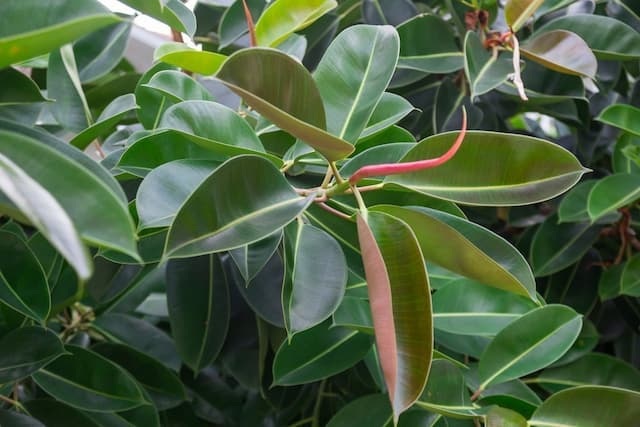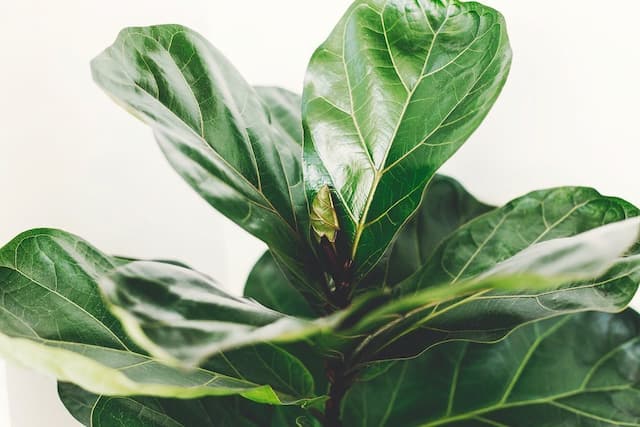Fig 'Brown Turkey' Ficus carica 'Brown Turkey' (F)

ABOUT
'Brown Turkey' is a large deciduous shrub with bold, deeply lobed leaves and insignificant flowers followed by edible fruit to 10cm in length, at first green, but purplish when ripe. Usually one crop of fruit per year, but sometimes two in a hot summer or under protection
About this plant
 Names
NamesFamily
Moraceae.
Synonyms
Brown Turkey Fig, Eastern Brown Turkey Fig, Aubique Noire, Negro Largo.
Common names
Ficus carica 'Brown Turkey'
 Characteristics
CharacteristicsLife cycle
Perennials
Foliage type
Deciduous
Color of leaves
Green
Height
10-30 feet (3-9 meters)
Spread
10-20 feet (3-6 meters)
Plant type
Tree
Hardiness zones
7
Native area
Mediterranean
Benefits
 General Benefits
General Benefits- Edible Fruit: Ficus carica 'Brown Turkey', commonly known as Brown Turkey Fig, produces sweet, edible fruits that can be eaten fresh, dried, or used in cooking and baking.
- Landscape Value: This fig variety is known for its ornamental beauty, with large, lobed leaves that add a tropical look to the landscape.
- Drought Tolerance: Brown Turkey Figs are relatively drought-tolerant once established, making them suitable for xeriscaping and low-water gardens.
- Easy Propagation: The plant is easy to propagate from cuttings, which allows gardeners to create new plants without the need for complex techniques.
- Pollinator Friendly: The flowers of the Brown Turkey Fig attract pollinators, which can help increase the biodiversity of a garden.
- Shade Provider: With its broad canopy, the Brown Turkey Fig tree can offer a cool, shaded area in the landscape during hot summer months.
 Medical Properties
Medical Properties- Antioxidant - Fig fruit contains various antioxidants like flavonoids and polyphenols.
- Anti-inflammatory - Components in figs may have anti-inflammatory effects.
- Laxative - Figs are known to help in relieving constipation due to their high fiber content.
- Antidiabetic - Some studies suggest fig extracts may help lower blood glucose levels.
- Anthelmintic - The latex from the fig plant has been used traditionally to expel intestinal parasites.
- Antibacterial - Fig extracts have shown antibacterial properties in some studies.
- Antipyretic - Fig fruit, leaves, or infusion has been traditionally used to reduce fever.
- Antitussive - Figs have been used to alleviate symptoms of respiratory conditions like a cough.
- Wound healing - Topical application of fig extracts or latex may assist in the healing of minor skin wounds.
- Cardiovascular health - The potassium and fiber in figs may support cardiovascular health.
 Air-purifying Qualities
Air-purifying QualitiesThis plant is not specifically known for air purifying qualities.
 Other Uses
Other Uses- Ficus carica 'Brown Turkey', commonly known as Brown Turkey fig, can be utilized as a robust and attractive plant for bonsai. Enthusiasts appreciate it for its broad leaves and robust structure, which can be manipulated into artistic shapes over time.
- The sap of the Brown Turkey fig is a natural latex and has been historically used as a coagulant for dairy products such as cheese, helping in the curdling process.
- Leaves from the Brown Turkey fig can be used in cooking as a wrapping material for grilling or roasting. They impart a subtle flavor to meats and seafood.
- The wood of the fig tree can be used in the smoking process to flavor meats and fish, offering a sweet and fruity touch to the smoked products.
- Due to its vigorous root system, the Brown Turkey fig is sometimes planted for erosion control, helping to stabilize the soil in vulnerable areas.
- The fig leaves are sometimes used as a natural dye, creating a range of colors from yellow to tan when applied to fabrics.
- Scraps and trimmings from the pruning of Brown Turkey figs can be composted and used as a rich organic matter that benefits garden soil composition and fertility.
- When sufficiently dry, the fallen leaves of the Brown Turkey fig can serve as mulch, providing a protective layer for the soil, helping retain moisture, and suppressing weeds.
- The Brown Turkey fig tree provides habitat and food resources for wildlife such as birds and beneficial insects which help in pollination and pest control.
- In some cultures, fig leaves from the Brown Turkey fig are used in handcrafts, such as creating natural baskets or decorative items.
Interesting Facts
 Feng Shui
Feng ShuiThe plant Brown Turkey Fig is not used in Feng Shui practice.
 Zodiac Sign Compitability
Zodiac Sign CompitabilityThe plant Brown Turkey Fig is not used in astrology practice.
 Plant Symbolism
Plant Symbolism- Fertility and Abundance: The common fig, which is the fruit of the Ficus carica 'Brown Turkey', has long been associated with fertility due to its many seeds and the fruit's teardrop shape.
- Peace and Prosperity: Fig trees have been symbols of peace and prosperity in various cultures, partly because they often grow in places with a temperate climate and sufficient water, ideal for human habitation.
- Knowledge and Enlightenment: In some traditions, the fig is seen as a tree of knowledge, bringing to mind the story of Adam and Eve where the fig leaves offered them cover, thus symbolizing the acquisition of knowledge, especially that which exposes something previously hidden.
- Longevity and Resilience: Fig trees are known for their long lifespan and resilience, which can symbolize a person's ability to withstand hardship and endure through difficult times.
 Water
WaterBrown Turkey figs should be watered deeply once a week during the growing season, ensuring that the water penetrates the soil to reach the root zone. Young trees may need about 5 gallons per week, while mature trees might require up to 15 gallons, depending on climate conditions. Reduce watering in the winter when the plant is dormant, possibly to just enough to keep the soil from drying out completely. Over-watering or waterlogging can lead to root rot, so ensure good drainage. In hot, dry weather, you may need to water more frequently, but always check the soil moisture level first.
 Light
LightBrown Turkey fig trees thrive in full sun, which means they should receive at least 6 to 8 hours of direct sunlight daily. The ideal spot would be an open area free from shade or shadows cast by buildings or other trees throughout the day. Too little light can result in poor fruit development and yield, so situating the tree in the sunniest part of your garden is best.
 Temperature
TemperatureBrown Turkey figs grow best in warm temperatures and are hardy in USDA zones 7 to 9. They can survive temperatures down to about 15 to 20 degrees Fahrenheit, but growth will be optimal when temperatures are consistently between 60 and 85 degrees Fahrenheit. Extreme cold or frost can damage the tree, so providing some winter protection in cooler climates can help ensure its survival.
 Pruning
PruningPruning Brown Turkey fig trees promotes healthy growth, increases sunlight penetration, and encourages fruit production. Prune in late winter or early spring before new growth starts. Remove dead or diseased wood, thin out crowded branches, and shape the tree to maintain an open canopy. This type of fig responds well to pruning, and it can be done annually to keep the tree healthy and productive.
 Cleaning
CleaningAs needed
 Soil
SoilBrown Turkey Fig thrives in well-draining soil with a pH range of 6.0-7.0. An ideal soil mix can be made by combining 1 part garden soil, 1 part compost or well-rotted manure, and 1 part perlite or coarse sand to ensure good drainage.
 Repotting
RepottingBrown Turkey Fig trees should typically be repotted every 3-5 years. It's best to repot in early spring before new growth starts, using the newly recommended soil mix and ensuring the pot has good drainage.
 Humidity & Misting
Humidity & MistingBrown Turkey Fig prefers moderate humidity levels. While they can adapt to a range of humidity, aiming for 40-50% relative humidity would be ideal for healthy growth.
 Suitable locations
Suitable locationsIndoor
Place Brown Turkey Fig in bright light and water when topsoil feels dry.
Outdoor
Plant in sunny spot, water regularly, protect from cold winds and frost.
 Life cycle
Life cycleThe common fig (Ficus carica 'Brown Turkey') begins its life as a seed, which upon finding a suitable environment, germinates and develops into a seedling. Root system expansion and shoot development mark the sapling stage, with the plant becoming more woody over time. As it matures into a young tree, the fig develops distinctive large, lobed leaves and begins to exhibit vegetative growth followed by flowering, although its flowers are uniquely hidden inside the fig structure known as syconia. The tree enters its reproductive phase, producing the syconia which contain the flowers; these pollinated flowers inside the syconium develop into the fruit we know as figs. The 'Brown Turkey' variant is known for producing two crops a year, an early crop on last year's growth and a main crop on current growth. This cycle continues annually, with the tree able to produce fruit for many years, sometimes even centuries, while also shedding leaves seasonally in colder climates before entering a dormancy period and then beginning the cycle anew with spring growth.
 Propogation
PropogationPropogation time
Spring-Early Summer
The common fig, specifically the Ficus carica 'Brown Turkey', can be propagated most effectively through stem cuttings. This method is particularly popular because it is straightforward and has a high success rate. The ideal time to take cuttings for propagation is late winter to early spring, when the tree is still dormant. Cuttings should be about 6 to 10 inches long (15 to 25 cm) and contain several nodes. After cutting, the bottom end of the cutting should be dipped in rooting hormone, which stimulates root growth, and then planted in a well-draining soil mix. The soil should be kept moist, and the cuttings should be placed in a warm spot with indirect light. Roots will typically develop within a few weeks, after which the new fig plants can be transferred to larger pots or directly planted in the ground if the climate permits.




